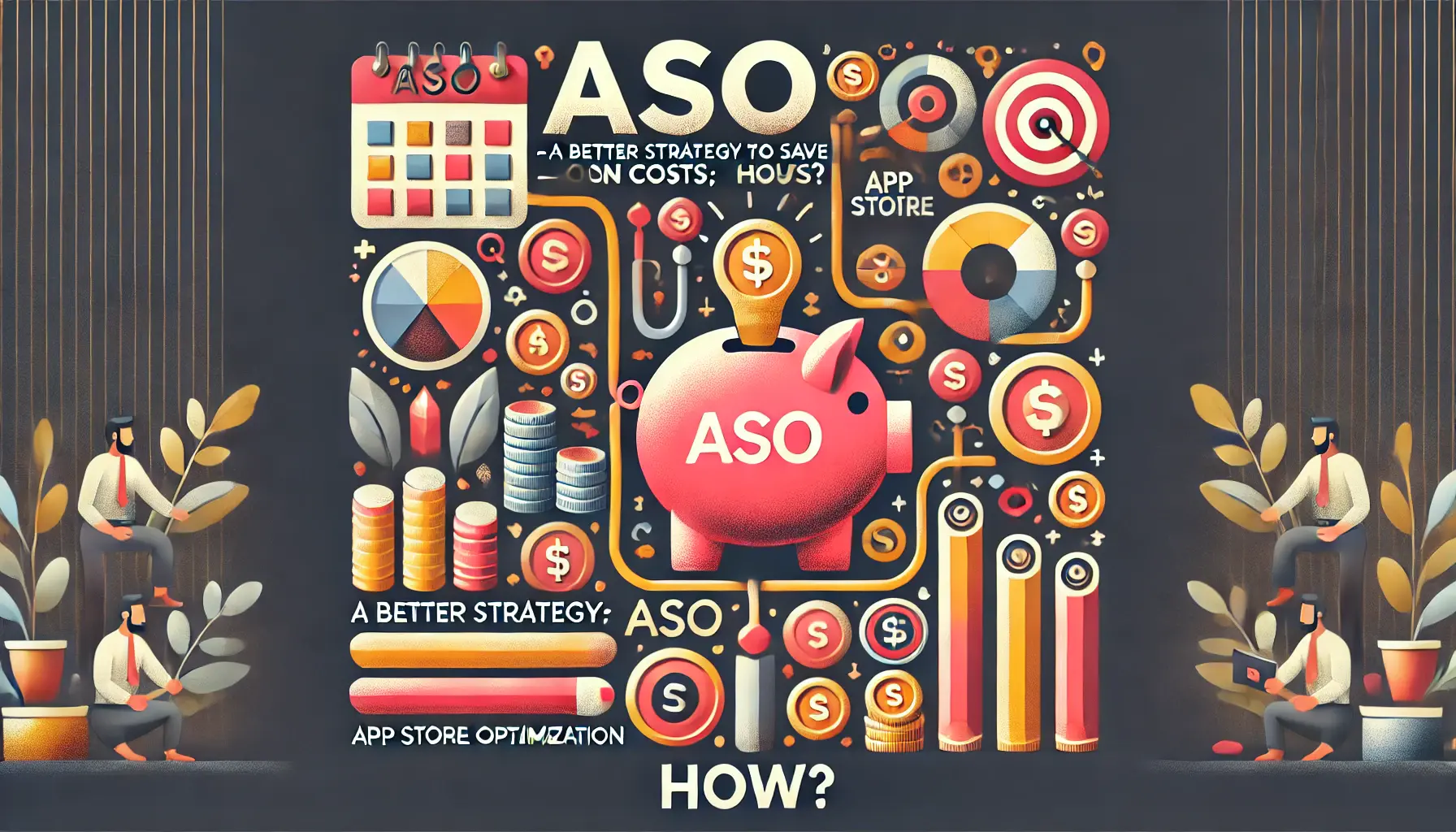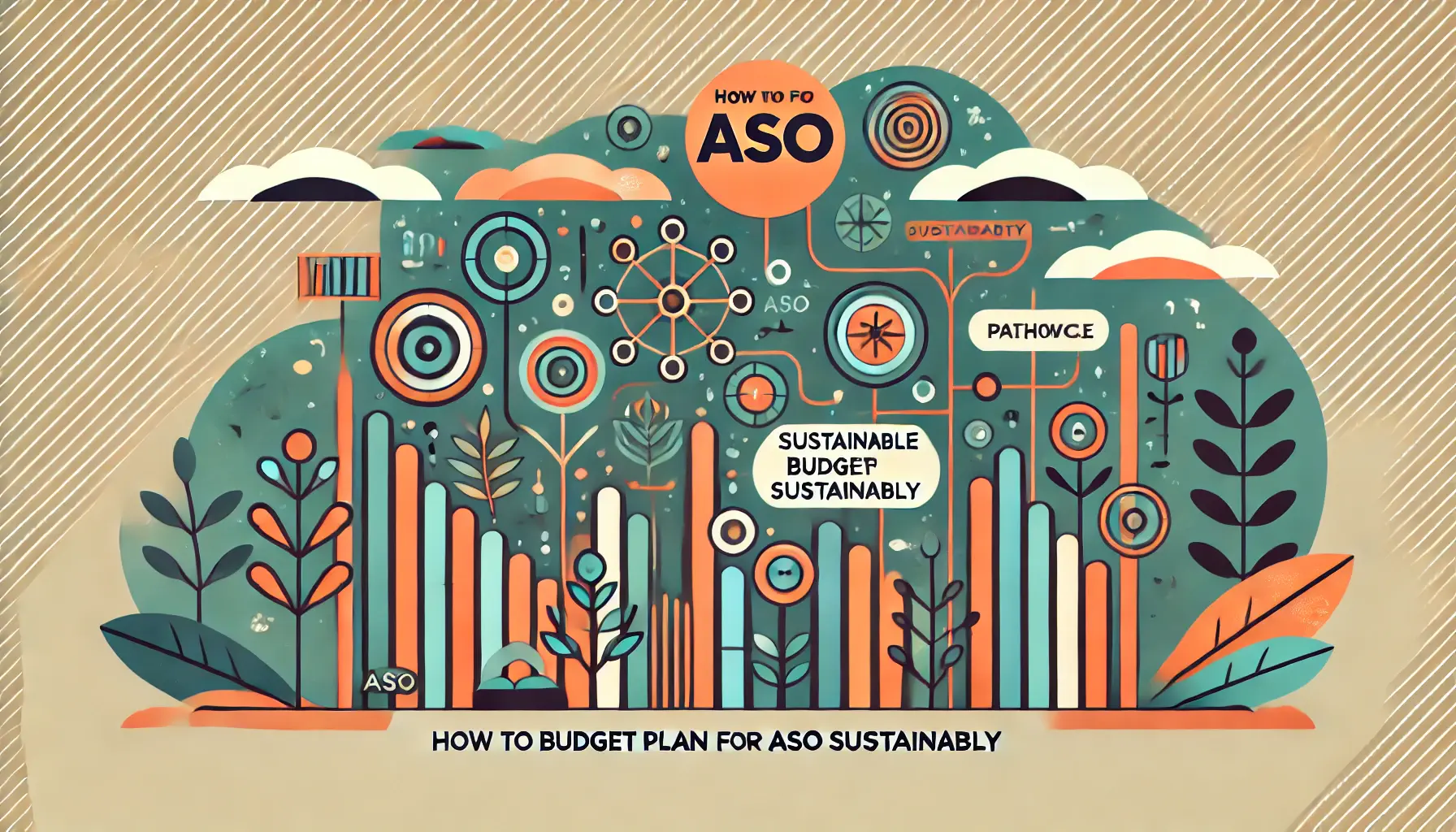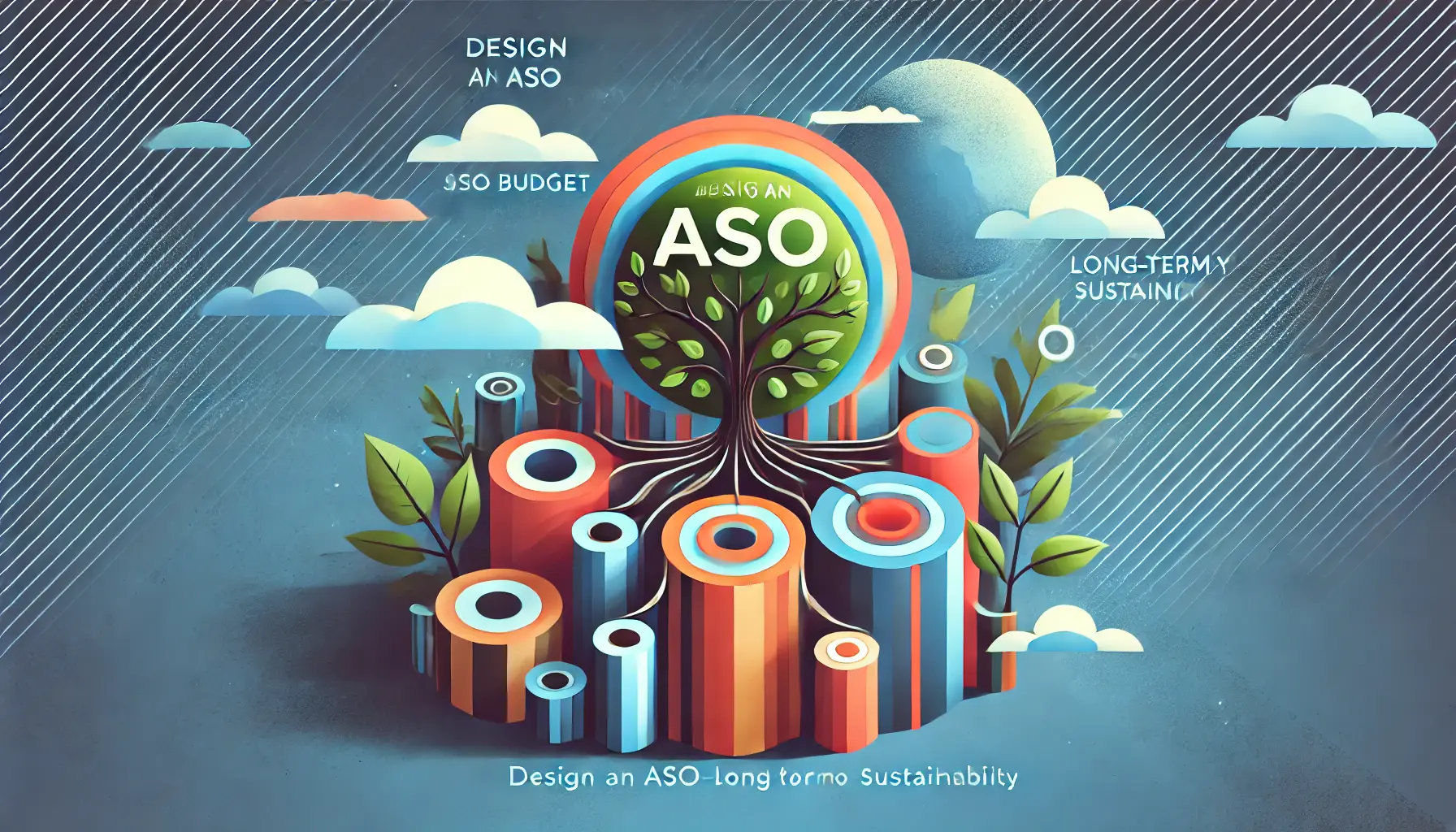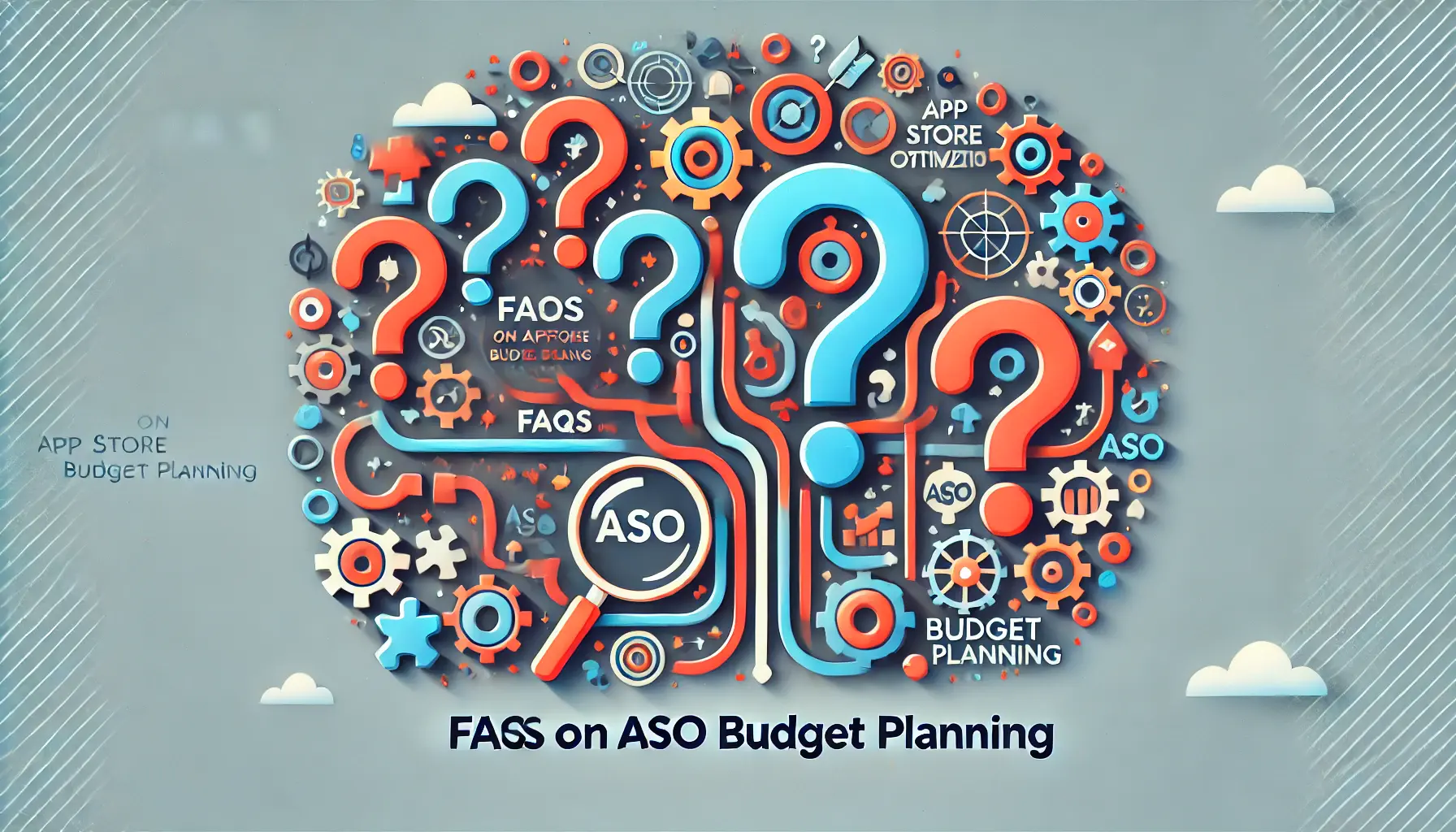During the rapid rise of mobile apps units, App Store OptimizationThe process of improving the visibility and ranking of a mobile app in an app store. (ASO) impetrates itself as a core strategy for developers and marketers looking to maximize their app’s share of traffic.
However, as with any good marketing strategy, ASO budget planning takes careful planning and resource allocation to ensure you get the results that you are aiming for.
This is where ASO budget planning comes in.
By doing so, you can get the most out of whatever resources you invest in ASO, ensuring these efforts are sustainable for a long time to come.
This article will provide an in-depth look into the basics of ASO budget planning and how to distribute your resources for the greatest effect.
- ASO Budget Planning: What to Keep in Mind
- How to Prioritize & Make Trade-offs with Your ASO Budget
- ASO – A Better Strategy to Save On Costs; How?
- How to Monitor & Adjust Your ASO Budget
- How to Budget Plan for ASO Sustainably
- Takeaway: Design an ASO Budget to Ensure Long-Term Sustainability
- FAQs on ASO Budget Planning
ASO Budget Planning: What to Keep in Mind
A robust ASO budget plan should account for several critical elements in your keyword strategy to provide effective and efficient results.
If you do not understand these key factors well, you may end up overspending on strategies that yield far less value than others or, quite the opposite, cutting valuable spending in areas that could scale your company to new heights.
In this article, we will dissect the essential ASO budgeting components so you can lay a strong foundation for your strategy.

Abstract representation of the reasons behind ASO budget planning with elements of strategic planning and resource management.
The Reasons for ASO Budget Planning
ASO budget planning is crucial because competition varies from one app to another, as does the budget spent on ASO, which directly aligns with your app’s objectives and competitiveness in the marketplace.
When you have no budget plan, chances are high that you’ll spend too much on ineffective strategies that do not help to grow your app or miss out on opportunities that could elevate your visibility and downloads.
To effectively plan your ASO budget, you should be able to:
- Spend strategically: Deploy your resources where they will make the biggest difference.
- Maximize Growth ROI: Ensure that every cent spent leads to the growth of your app.
- Minimize risk: Avoid overspending on unproven tactics.
- Adjust to changes: Be flexible in your budget and adapt it to changing market conditions.
When you keep these in mind, ASO budget planning functions as a roadmap for all the marketing work needed around your app.

Abstract representation of the basic building blocks of ASO budget planning, showcasing foundational elements in a structured design.
ASO Economics: The Basic ASO Budget Planning Blocks
More specifically, there are several key elements that need to be figured out for successful ASO budget planning:
- Market Validation: Conducting research on the competitive landscape and target customers.
- Objectives: Setting clear and measurable goals for your ASO strategy.
- Budget Allocation: Assigning a dedicated budget for your App Store Optimization efforts, such as keyword optimization, creatives, and user acquisition.
- Performance Monitoring: Tracking how well your ASO is performing and making data-driven adjustments.
- Risk Management: Identifying potential risks and developing plans to mitigate them.
By considering these key aspects, you can construct a comprehensive ASO budget plan that ensures your app has the greatest chance of success.

Abstract representation of setting realistic ASO goals, illustrating the concept of direction and clarity in achieving objectives.
Setting Realistic ASO Goals
This is an important stage of ASO budget planning—you need to set realistic ASO goals, and the more accurate your plan, the better it will be developed.
In other words, your goals should be SMART: Specific, Measurable, Achievable (and realistic), Relevant, and Time-Bound.
For instance, instead of aiming for a vague target like ‘more downloads,’ set a goal such as achieving 20% growth in downloads over the next three months.
The more specific your goals, the better you can calculate your budget, making it easier to monitor progress effectively.

Abstract representation of tracking key performance metrics, illustrating the importance of measurement and analysis for success.
Key Performance Metrics to Track Success
Once you have created an ASO budget plan, how do you know if it was successful?
By aligning your key performance indicatorsMetrics used to measure the effectiveness of a strategy or activity. with your objectives, you can track your success.
The most critical metrics include:
- Keyword Rankings: How well your app ranks for target keywords.
- Conversion Rate: The percentage of users who download your app after viewing it.
- Organic Downloads: Downloads that result directly from your ASO efforts.
- Cost Per Acquisition (CPA): The cost of acquiring a new user through your ASO strategy.
- ROI (Return on Investment): The overall return on your ASO spending.
By benchmarking your ASO metrics, you can assess whether the money spent is worthwhile and make informed decisions about future resource allocation.
To effectively plan your ASO budget, you should be able to:
- Spend strategically
- Maximize Growth ROI
- Minimize risk
- Adjust to changes

Abstract representation of prioritizing and making trade-offs in ASO budget management, illustrating careful planning and strategic decision-making.
How to Prioritize & Make Trade-offs with Your ASO Budget
When it comes to preparing your ASO budget, once you do the basics and have built a foundation for yourself, the next step is allocating the proper budget.
This includes figuring out where your resources can make the greatest difference and sometimes making trade-offs.
Invest in the most critical areas of your app that help you get seen and grow, but at a cost that allows you to still work within budget.

Abstract representation of balancing paid and organic growth strategies in ASO, illustrating the harmony between financial investment and natural growth.
The Power to Juggle Paid and Organic Growth
Deciding where in the budget to allocate ASO spending involves making choices between organic growth strategies and paid campaigns.
Although organic growth is generally less expensive over time, paid campaigns can offer the initial push required to generate downloads and traffic.
When allocating your ASO budget, consider the following:
- Voluntary Advertising: Allocate part of your budget for voluntary advertising channels (Apple Search Ads, Google Ads) to drive quick user acquisition by increasing visibility.
- Organic Growth: Implement a series of long-term strategies such as keyword optimization, A/B testing, and overall improving your app’s metadata to grow organically.
- Increased Profitability: Examine the difference in profitability from paid versus organic growth, and then make your budget decisions based on which return will be most effective.
With proper planning across these strategies, you can ensure your app becomes visible both in the short term through paid efforts and sustains visibility over time through organic growth.

Abstract representation of allocating budget for ASO tools and services, illustrating the strategic investment in resources to enhance ASO efforts.
Set a Budget for ASO Tools and Services
A serious competitor in the ASO budget allocation is setting aside money for tools and services aimed at improving your app’s performance.
These might include:
- ASO Tools: Utilize keyword research, competitive analysis, and performance tracking tools to gain insights into your app’s visibility.
- Analytics Platforms: Use analytics platforms to analyze user behavior, track essential metrics, and base decisions on data.
- Professional Services: At this stage, hiring ASO consultants or agencies could be beneficial to refine your strategy and execute campaigns effectively.
- Design Resources: Allocate part of your budget to creating high-quality app store listing creatives like screenshots, videos, and icons to increase your conversion rate.
There are multiple tools and services you can use to improve your ASO efforts, which will make it easier for you to understand the decisions needed to optimize your app’s performance.

Abstract representation of budget allocation for localized ASO campaigns, illustrating the importance of targeted investment in different markets.
Budget Allocation for Localized ASO Campaigns
If your app targets multiple regions or has a local audience, it is important to allocate costs for promotions specifically for localized ASO campaigns.
Localization is key to enhancing your app’s visibility and appeal in foreign markets.
When budgeting for localization, keep in mind the following:
- Market Research: Apportion some of your funds towards researching and understanding user behavior and preferences in various global markets.
- Translation: Invest in professional translation services to properly translate your app’s metadata and keywords.
- Localized Creatives: Factor in the cost of creating localized versions of your campaign’s artwork, such as screenshots and videos, to best reach users in each region.
- Track Performance: Keep an eye on your localized campaigns and tweak your budget according to which regions are performing best for you.
Investing in localization within your ASO budget is the perfect way to increase your app’s reach and appeal to a broader audience of global users.

Abstract representation of the trade-offs involved in ASO budget allocation, illustrating the balance and decision-making required for strategic resource management.
The ASO Budget Allocation Trade-offs
When planning your ASO budget, you should be aware of the inevitable trade-offs.
Based on your app’s goals and market needs, you may have to invest more resources in some areas over others.
There are many trade-offs to consider, but a few key ones include:
- Immediate Impact vs. Long-Term Growth: Should you invest more in short-term paid campaigns or focus on long-term strategies that build steady organic growth?
- Tool Investment vs. In-House Efforts: Balancing the cost of ASO tools and services against the potential benefits of managing your ASO efforts in-house.
- Global vs. Local Focus: Allocating budget based on whether your primary focus is on global reach or on penetrating specific local markets.
- Quality vs. Quantity: Prioritizing the quality of your app store assets and marketing efforts over the quantity of keywords or campaigns.
The exact trade-offs you choose to make will depend on your app’s specific goals and the metrics you use to measure success in each area.
Invest in the most critical areas of your app that help you get seen and grow, but at a cost that allows you to still work within budget.

Abstract representation of saving costs in ASO through strategic planning and resourceful optimization.
ASO – A Better Strategy to Save On Costs; How?
After you have set your ASO budget, the next most important thing is to spend it wisely so that every dollar works towards creating growth for your app.
Managing your budget in ASO is not about spending less money but about investing wisely to achieve the highest ROIReturn on Investment, a measure of the profitability of an investment..
This involves a strategic approach using testing and data to make ongoing optimizations.

Abstract representation of maximizing ASO spend through data-driven insights, illustrating precision and efficiency in optimization.
Using Data to Maximize ASO Spend
Data is the glue that holds any successful ASO strategy together.
It provides you with insights into how your app is performing, what achievements have been made, and where to focus next based on metrics from multiple sources.

Abstract representation of key data points in ASO, illustrating the importance of connectivity and insight in decision-making.
Key Data Points
- Track Keyword Performance: Keep an eye on how your target keywords are performing and shift focus to those that bring in more traffic and conversions.
- Conversion Rates: Analyze the conversion rates of your app listing to identify areas for improvement, such as enhancing app visuals or updating the app description.
- User Behavior: Use analytics tools to monitor how users interact with your app and its listing. Understanding what affects user behavior allows you to adapt your ASO strategy accordingly.
- Track Your Competitors: Watch your competitors to see their strategies and how they are performing. This can reveal potential opportunities or threats.
Effective use of data means you can spend your ASO budget in the right places and get more out of your performance in app stores.
This approach involves doing more A/B testingA method of comparing two versions of an app or its elements to determine which performs better. and making necessary budget adjustments.

Abstract representation of A/B testing as a tactic for optimizing ASO budget, illustrating the importance of experimentation and comparison in refining strategies.
One Tactic for the Optimization of Your ASO Budget: A/B Testing
One effective tactic for optimizing your ASO budget is to use A/B testing.
You’ll want to test your app listing elements, such as the title, keywords, or screenshots, until you find the best-performing variation.
This ensures that your budget is spent on strategies that yield the best results.
When you run an A/B test, keep the following in mind:
- Test One Variable at a Time: To isolate results and minimize noise, focus on testing only ONE variable at a time, such as a new keyword, a different screenshot, or a revised app description.
- Analyze Results: After the test, analyze the data to determine which version resulted in more downloads or conversions. This valuable information can be used to enhance your ASO strategy.
- Continuous Testing and Iteration: Continuous testing and iteration are critical to staying ahead of your competitors and ensuring that all efforts on ASO feature optimization. By constantly running A/B tests, you can update your budget using hard data when needed, so resources are always used to maximum efficacy in terms of ASO.

Abstract representation of using ASO analytics, illustrating the importance of data-driven decision-making and monitoring in optimizing app store performance.
How to Use ASO Analytics
ASO analytics tools provide insights into the value of your ASO spending.
These tools help you monitor different metrics, from keyword rankings to user engagement, giving you a comprehensive view of your app’s performance.
Here’s how to take advantage of ASO analytics:
- Clear KPIs: Determine the Key Performance Indicators (KPIs) most indicative of your app’s success, such as conversion rates, keyword rankings, and user retention.
- Monitor Trends: Monitor trends over time to catch long-term patterns or changes in performance. This can help you identify shifts in the market and adjust your strategies accordingly.
- Competitor Benchmark: Analyze your app against others to validate rankings and categories. This will show any areas where you may need to increase your budget or adjust your ASO strategy.
- Analyze and Make Changes: Use the data to your advantage by regularly analyzing information such as click-through rates, impressions, or complete campaign reports. Refine your strategy for further improvement based on these insights. This continuous process helps keep your ASO budget aligned with your app’s goals.
When you optimize your ASO spend using the right tools, whether from an install or growth focus, data-driven decisions can maximize their impact.

Abstract representation of cutting ASO waste, illustrating the importance of efficiency and resource optimization in App Store Optimization strategies.
Cutting ASO Waste
Minimizing waste is one of the key factors in optimizing your ASO budget.
Even the best-laid plans can sometimes fall short of how resources could have been used more effectively in other areas.
To minimize waste, consider the following strategies:
- Eliminate Underperforming Keywords: If a particular keyword or phrase consistently underperforms in driving traffic, consider removing it from your strategy.
- Optimize Creative Assets: Invest in high-quality creative assets that align with your target audience. Avoid creating too many variations that could spread your budget thin.
- Target High-Impact Areas: Focus your resources on areas that are already showing the most growth. Target your top-performing keywords or campaigns for the best results.
- Regular Budget Reviews: Schedule regular reviews of your ASO budget to find areas where you can reduce costs without compromising performance. Less waste means a budget used to its maximum potential, leading to better results and a higher ROI on your ASO efforts.
Managing your budget in ASO is not about spending less money but about investing wisely to achieve the highest ROI.

Abstract representation of monitoring and adjusting an ASO budget, illustrating vigilance and strategic oversight in budget management.
How to Monitor & Adjust Your ASO Budget
As soon as you have your ASO budget arranged, the work doesn’t stop there.
The budget should be monitored ongoing and adjusted as needed to ensure that it stays aligned with the goals of your app in light of evolving market conditions.
The app store landscape is always changing, and the tactics that work today may not be effective tomorrow.
By regularly reviewing your ASO strategy and budget, you can take the correct measures to help your app stay competitive and perform at its best.

Abstract representation of the relationship between budget and performance in ASO, illustrating the balance and strategic decision-making involved.
Budget vs. Performance in ASO
The first thing you should do is to track the ASO performance of your app against what you have budgeted.
This means evaluating whether you are achieving your desired profits from the money you have invested and identifying areas where things are not going according to plan.
Here are methods to consider:
- Benchmarks: Set solid benchmarks for success, such as target conversion rates, keyword rankings, and download numbers. Use these benchmarks to measure how well your ASO budget is performing in practice.
- Analyze with Tools: Use ASO analytics tools to track the most important metrics and their changes in real time. This data allows you to track trends, catch hazards early, and make informed decisions for any necessary budget adjustments.
- Frequent Performance Reviews: Set up regular intervals to observe how your app is performing in the app stores. This could be weekly, monthly, or quarterly, depending on market movement in your app’s category. Regular performance reviews ensure that your ASO efforts are working effectively and allow you to spend smarter.
With goals consistently tracked, you can base decisions on data and get the most out of your ASO budget!

Abstract representation of regular ASO budget reviews, illustrating the importance of ongoing evaluation and strategic refinement.
Regular ASO Budget Reviews
Regularly review your ASO budget to ensure it remains aligned with your goals as a differentiated app product or service.
These reviews help you determine whether your budget allocations are performing well and if adjustments are needed.
Key areas to focus on include:
- Reallocation of Resources: If some strategies are returning suboptimal results, consider reallocating resources to better-performing campaigns or initiatives. This might involve shifting budget from paid ads to organic growth, or vice versa, depending on what’s driving the best results.
- Find Cost-Saving Opportunities: Identify areas where you can cut costs and improve performance. This could mean negotiating better rates with service providers or optimizing your use of ASO tools.
- Adjust Goals and Metrics: As your app evolves, so too should your goals and the metrics you use to measure success. Regularly update these to reflect current market conditions and your app’s development stage.
By conducting these reviews, you can keep your ASO budget flexible and responsive, allowing it to meet changing requirements swiftly in such a competitive space.

Abstract representation of adapting to market changes, illustrating the importance of agility and strategic foresight in ASO strategies.
Adapting to Market Changes
App store dynamics are constantly shifting, with trends and user behaviors evolving over time.
Ensuring that your ASO budget adapts to these changes is crucial for a successful ASO strategy.
Here’s how you can do that:
- Track App Store Trends: Pay attention to emerging trends within the app store and monitor what your competitors are doing. This could include changes in trending keywords, shifts in user behavior, or new features introduced by the app stores.
- Change Strategies: Be prepared to pivot your ASO strategies based on market trends. This might involve updating your keyword strategy, refreshing the look of your app, or investing in new promotional tactics.
- Budget Flexibility: Keep your ASO budget flexible so you can quickly scale up or down as needed. This involves allocating a portion of your budget for unexpected opportunities or challenges that may arise.
By adjusting your ASO budget according to market changes, you can keep up with the competition and ensure that your app remains a leader in its field.

Abstract representation of performance-based budget reallocation, illustrating the strategic decision-making and optimization of resources.
Performance-Based Budget Reallocation
Lastly, adjusting your ASO budget based on performance is key to maintaining an effective App Store Optimization strategy.
This approach allows you to keep an eye on your app’s performance and the effectiveness of your budget allocations, identifying potential areas where resources could be better utilized.
Here’s how to approach budget reallocation:
- High-Performing Areas: Pay particular attention to strategies or campaigns that are delivering exceptional results. Consider reallocating more resources to these areas to maximize their impact.
- Reduce Spend on Low-Performing Tactics: Conversely, consider reducing or eliminating spending on tactics that aren’t producing the desired results. Redirect these funds to better-performing initiatives.
- Test & Experiment: Allocate a portion of your budget for running experiments or testing new strategies or campaigns. This allows you to explore new opportunities while still focusing on what has already been working.
- Ongoing Process: Budget reallocation is not a one-time task. Continuously monitor how well your ASO efforts are performing in the app stores, and be prepared to make tweaks to ensure that your app stays ahead.
Regularly rebalancing your ASO budget based on performance helps you use your resources in the most efficient way possible, driving sustained growth and scaling the organic reach of your app.
By regularly reviewing your ASO strategy and budget, you can take the correct measures to help your app stay competitive and perform at its best.

Abstract representation of sustainable budget planning in ASO, illustrating the importance of long-term growth and responsible resource management.
How to Budget Plan for ASO Sustainably
Like with any other part of your ASO strategy, the overall goal should be to apply best practices that improve how efficiently and effectively you can make use of whatever ASO budget you have.
Sustainable budget planning is not to be confused with short-term optimization; it focuses on building a financial strategy that promotes continuous growth and enables your app to adapt to new market opportunities.

Abstract representation of budgeting for ASO in the long-term, illustrating strategic planning and sustainable development.
How to Budget for ASO in the Long-Term
ASO budget planning is a long-term process, so your team needs to focus on strategies that will help your app grow over time, rather than just seeking immediate wins.
The following tactics might help you:
- Scalability Matters: Ensure your budget can scale as your app grows. This might involve setting aside funds to move into new markets, increasing ad spend during peak conversion seasons, or investing in more advanced ASO tools as your needs evolve.
- Spend on Continuous Optimization: Allocate a percentage of your budget for ongoing testing, such as keyword updates, A/B tests, and creative refreshes. Continuous optimization helps keep your app visible and competitive over the long term.
- Budget for Contingencies: Markets can be unpredictable, and unforeseen challenges may arise. Establish a reserve in your budget to manage unplanned events or opportunities as they arise.
Integrating these strategies into your budget planning helps you establish a sustainable financial plan that supports the long-term success of your app.

Abstract representation of a scalable ASO budget, illustrating growth potential, adaptability, and structured expansion.
Having a Scalable ASO Budget
Two of the most important factors in ASO budget planning are scalabilityThe ability of a system or strategy to handle growth or increased demand. and flexibility.
A scalable and flexible budget allows you to pivot quickly when new market developments occur, capitalize on opportunities in a fast-changing environment, and limit exposure to risk.
Here’s how to build a flexible ASO budget:
- Budget for Testing: Reserve a portion of your budget for testing new strategies or campaigns. This gives you the flexibility to experiment with new approaches and pivot quickly if something isn’t working.
- Iterate Upon Performance: Monitor how your ASO investments are performing and adjust spending levels based on the results. This puts you in an optimal position to scale up successful strategies or pivot away from less effective ones.
- Stay Updated: Keep up with the latest trends and best practices in ASO. An informed budget will be easier to make flexible and adapt to the latest changes in the app store environment.
By keeping your budget flexible, you can ensure that your ASO strategy remains responsive to whatever the market throws your way.

Abstract representation of aligning budget with business objectives, illustrating strategic alignment and goal-oriented planning.
Budget In Line with Business Objectives
Your ASO budget should align with the broader goals and objectives of your app.
This alignment ensures that your resources are spent in a way that supports higher-level objectives, such as improving revenue, acquiring new users, or increasing customer retention.
Consider the following:
- Determine Top Business Goals & Allocate Your ASO Budget Accordingly: Identify your key business goals and allocate your ASO budget to support these objectives. For example, if user acquisition is a priority, allocate more funds toward strategies that drive downloads and engagement.
- Integrate ASO with Other Marketing Efforts: Your ASO budget should not operate in isolation. Integrate it with your other marketing efforts to create a cohesive strategy that amplifies your overall impact. This might involve coordinating ASO with paid ads, social media campaigns, or content marketing.
- Measure ROI: Continuously measure the return on investment (ROI) of your ASO efforts to ensure they are contributing to your business goals. Use these insights to refine your budget and strategy over time.
Properly aligning your ASO budget with your business objectives helps maximize the effectiveness of your marketing efforts and drives sustained growth.

Abstract representation of team collaboration in ASO, illustrating the unity and collective effort needed for successful optimization.
Team Collaboration for a Successful ASO
The success of your ASO budget often relies on collaboration across different teams in your organization.
By working together, you can ensure that your ASO efforts are fully integrated with other marketing and product development initiatives.
Here’s how to foster collaboration:
- Cross-Functional Communication: Promote regular communication between your ASO team and other departments, such as marketing, product development, and customer support. This ensures that everyone is aligned on goals and strategies.
- Common Goals: Establish common goals that capitalize on both ASO objectives and broader business objectives. This fosters a sense of ownership and accountability across teams.
- Leverage Team Expertise: Different teams bring different strengths to the table. Leverage the expertise of each team to enhance your ASO strategy, whether it’s creative input from marketing, technical insights from product development, or customer feedback from support.
Collaboration is key to making the most of your ASO budget and achieving long-term success in the app store.
Sustainable budget planning is not to be confused with short-term optimization; it focuses on building a financial strategy that promotes continuous growth and enables your app to adapt to new market opportunities.

Abstract representation of designing an ASO budget for long-term sustainability, illustrating stability, resilience, and strategic foresight.
Takeaway: Design an ASO Budget to Ensure Long-Term Sustainability
While the guidance above helps your app grow in the short term today—just as it does for a best-in-class ASO strategy—the key is to design a budget that ensures long-term sustainability.
In this article, we have covered the main nuances of ASO budget planning, including why it is important and how to strategically allocate resources to avoid waste and prepare for various scenarios.
Here is a reminder of the main takeaways to keep in mind as you refine your ASO strategy:

Abstract representation of major insights in ASO budget planning, illustrating clarity, understanding, and strategic importance.
ASO Budget Planning: Major Insights
If you want your ASO budget to drive continued growth and achieve long-term success, keep these principles top of mind:
- Build for Scale: Ensure that your budget can scale as your app grows, giving you the ability to fund new opportunities or expand into new markets.
- Continuous Optimization: Regularly optimize your ASO strategies, including keyword optimization, creative refreshes, and A/B testing, to maintain continuous visibility and competitiveness.
- Be Prepared to Move Quickly: A flexible budget allows you the freedom to pivot quickly if market conditions change, experiment with different strategies, and react swiftly to unexpected challenges or opportunities.
- Align with Business Goals: Cross-reference your ASO budget with your overarching business goals to ensure that your ASO campaigns support higher objectives, such as boosting revenue and user acquisition.
- Collaboration Between Teams: Encourage your ASO team to collaborate with other departments, such as product development and marketing, to create a cohesive and holistic synergy between all strategies.

Abstract representation of developing a future-ready ASO strategy, illustrating innovation, progress, and long-term vision.
Developing an ASO Strategy for the Future
Just like any organic traction strategy, your ASO budget should evolve over time as the app store landscape changes.
Follow the best practices discussed here to build a strategy that not only meets your current needs but is also future-ready, ensuring long-term success.
By keeping your budget in check, you can increase the success of your ASO campaigns, outpace competitors, and adapt to the fast-paced industry by regularly reviewing and adjusting your budget.
A well-thought-out ASO budget can serve as the foundation for a strong app marketing strategy.
These strategies, centered around a solid foundation of organic search and social media advertising, combined with ongoing iteration and planning, will help you stay competitive, visible, and growing within the ever-evolving app store ecosystem.

Abstract representation of addressing common questions in ASO budget planning, illustrating inquiry, exploration, and clarity.
Boost your mobile app's success with our guaranteed App Store Optimization (ASO) service. Leave it to the experts!
FAQs on ASO Budget Planning
To help clarify some of the above points, here are a few representative questions commonly asked about ASO budget planning along with further guidance.
With an ASO budget, you allocate resources more carefully to optimize app exposure and growth while evolving with market needs and aligning with long-term business goals.
Set aside money for testing new strategies, make constant adjustments based on performance, and stay updated with the latest ASO trends to maintain flexibility in your budget.
Your ASO budget should cover costs for keyword optimization, creative assets, A/B testing tools, analytics, and contingencies for unforeseen circumstances or opportunities.
Review your ASO budget at least weekly, monthly, or quarterly to ensure it aligns with your app’s goals and responds to market dynamics.











